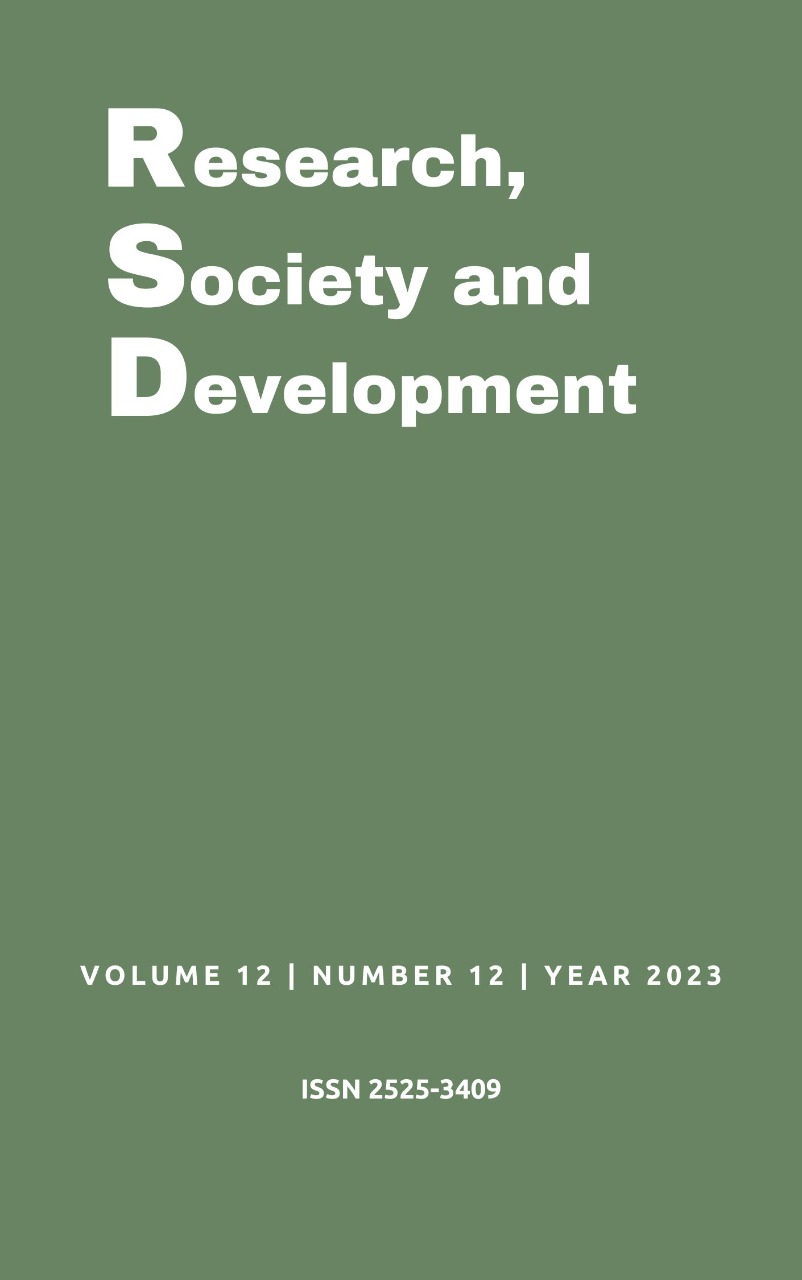Botulinum toxin as a therapeutic modality for headache
DOI:
https://doi.org/10.33448/rsd-v12i12.43898Keywords:
Botulinum toxins, type A, Headache disorders, Face.Abstract
Headache, popularly known as headache, is a common symptom in medical practice that can indicate serious problems. It can manifest itself episodic or continuously, with several associated symptoms, including nausea, vomiting, sensitivity to sensory stimuli, dizziness and irritability. Diagnosis of headache involves a detailed assessment of the patient's history and physical examination, aimed at categorizing the type of headache to determine appropriate treatment. Treatment varies depending on factors such as medical history and pain intensity, and may include a variety of medications. In cases of frequent and debilitating primary headaches, preventive treatment is indicated. Recently, botulinum toxin was approved by ANVISA as a preventive option for migraines when attacks are frequent and impair quality of life. In addition to medicinal options, non-drug approaches such as acupuncture, homeopathy, hypnotherapy and lifestyle adjustments are recommended as preventive measures. Botulinum toxin, derived from the bacteria Clostridium botulinum, is made up of different types, with type A being used to treat migraines. It works by weakening the muscles and providing pain relief, suggesting a direct impact on pain mechanisms. Therefore, the effectiveness of migraine treatment with botulinum toxin is a topic of interest in this study. Therefore, this narrative literature review study aims to analyze the scientific production on the treatment of migraine through the application of botulinum toxin.
References
Aguilar-Shea, A. L., Membrilla Md, J. A., & Diaz-de-Teran, J. (2022). Migraine review for general practice. Atencion primaria, 54(2), 102208.
Becker W. J. (2020). Botulinum Toxin in the Treatment of Headache. Toxins, 12(12), 803.
Begasse de Dhaem, O., & Rizzoli, P. (2022). Refractory Headaches. Seminars in neurology, 42(4), 512–522.
Cumplido-Trasmonte, C., Fernández-González, P., Alguacil-Diego, I. M., & Molina-Rueda, F. (2021). Manual therapy in adults with tension-type headache: A systematic review. Neurologia, 36(7), 537–547.
Del Blanco Muñiz, J. A., & Zaballos Laso, A. (2018). Cefalea tensional. Revisión narrativa del tratamiento fisioterápico [Tension-type headache. Narrative review of physiotherapy treatment]. Anales del sistema sanitario de Navarra, 41(3), 371–380.
Delcanho, R., Val, M., Guarda Nardini, L., & Manfredini, D. (2022). Botulinum Toxin for Treating Temporomandibular Disorders: What is the Evidence?. Journal of oral & facial pain and headache, 36(1), 6–20.
Dhanasekara, C. S., Payberah, D., Chyu, J. Y., Shen, C. L., & Kahathuduwa, C. N. (2023). The effectiveness of botulinum toxin for chronic tension-type headache prophylaxis: A systematic review and meta-analysis. Cephalalgia: an international journal of headache, 43(3), 3331024221150231.
Do, T. P., la Cour Karottki, N. F., & Ashina, M. (2021). Updates in the Diagnostic Approach of Headache. Current pain and headache reports, 25(12), 80.
Giri, S., Tronvik, E., Linde, M., Pedersen, S. A., & Hagen, K. (2023). Randomized controlled studies evaluating Topiramate, Botulinum toxin type A, and mABs targeting CGRP in patients with chronic migraine and medication overuse headache: A systematic review and meta-analysis. Cephalalgia: an international journal of headache, 43(4), 3331024231156922.
Jackson, J. L., Kuriyama, A., & Hayashino, Y. (2012). Botulinum toxin A for prophylactic treatment of migraine and tension headaches in adults: a meta-analysis. JAMA, 307(16), 1736–1745.
Kahriman, A., & Zhu, S. (2018). Migraine and Tension-Type Headache. Seminars in neurology, 38(6), 608–618.
Kępczyńska, K., & Domitrz, I. (2022). Botulinum Toxin-A Current Place in the Treatment of Chronic Migraine and Other Primary Headaches. Toxins, 14(9), 619.
la Fleur, P., & Adams, A. (2020). Botulinum Toxin for Temporomandibular Disorders: A Review of Clinical Effectiveness, Cost-Effectiveness, and Guidelines. Canadian Agency for Drugs and Technologies in Health.
Levin M. (2022). Classification and Diagnosis of Primary Headache Disorders. Seminars in neurology, 42(4), 406–417.
Martínez-Pías, E., García-Azorín, D., Trigo-López, J., Sierra, A., & Guerrero-Peral, A. L. (2021). Migraña crónica con cefalea diaria. Revisión de la bibliografía [Chronic migraine with daily headache. Literature review]. Revista de neurologia, 72(4), 133–140.
Roland, S. B., Pripp, A. H., Msomphora, M. R., & Kvarstein, G. (2021). The efficacy of botulinum toxin A treatment for tension-type or cervicogenic headache: a systematic review and meta-analysis of randomized, placebo-controlled trials. Scandinavian journal of pain, 21(4), 635–652.
Rother, E. T. (2007). Revisão sistemática x revisão narrativa. Acta Paul. Enferm, 20(2).
Shaterian, N., Shaterian, N., Ghanaatpisheh, A., Abbasi, F., Daniali, S., Jahromi, M. J., Sanie, M. S., & Abdoli, A. (2022). Botox (OnabotulinumtoxinA) for Treatment of Migraine Symptoms: A Systematic Review. Pain research & management, 2022, 3284446.
Szperka C. (2021). Headache in Children and Adolescents. Continuum, 27(3), 703–731.
Vázquez-Justes, D., Yarzábal-Rodríguez, R., Doménech-García, V., Herrero, P., & Bellosta-López, P. (2020). Effectiveness of dry needling for headache: A systematic review. Análisis de la efectividad de la técnica de punción seca en cefaleas: revisión sistemática. Neurologia, S0213-4853(19)30144-6.
Downloads
Published
Issue
Section
License
Copyright (c) 2023 Emilene Aparecida Ramos da Silva; Roberto Teruo Suguihara; Daniella Pilon Muknicka

This work is licensed under a Creative Commons Attribution 4.0 International License.
Authors who publish with this journal agree to the following terms:
1) Authors retain copyright and grant the journal right of first publication with the work simultaneously licensed under a Creative Commons Attribution License that allows others to share the work with an acknowledgement of the work's authorship and initial publication in this journal.
2) Authors are able to enter into separate, additional contractual arrangements for the non-exclusive distribution of the journal's published version of the work (e.g., post it to an institutional repository or publish it in a book), with an acknowledgement of its initial publication in this journal.
3) Authors are permitted and encouraged to post their work online (e.g., in institutional repositories or on their website) prior to and during the submission process, as it can lead to productive exchanges, as well as earlier and greater citation of published work.


